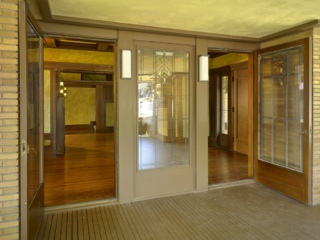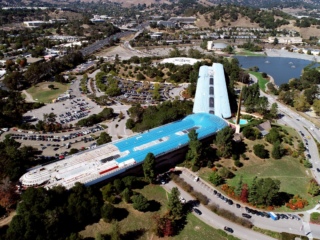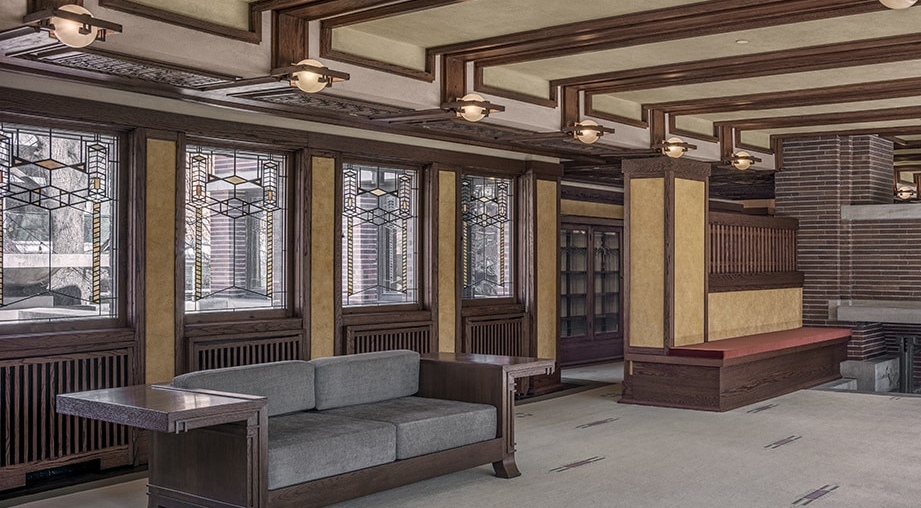
Robie House Reopens After Interior Restoration
Frank Lloyd Wright Foundation | Apr 3, 2019
In an effort to restore Frank Lloyd Wright’s Robie House interiors to their original vision, the Frank Lloyd Wright Trust has worked extensively on repairing and replacing various elements in the home. Now that the restoration project is complete, the Robie House has reopened and is offering new tours and programming.
The Frank Lloyd Wright Trust recently announced the reopening of the Frederick C. Robie House, after completion of extensive interior restoration. The $11 million restoration project of the Prairie Style home aimed to bring the building back to its original 1910 vision. With its bold horizontal lines, cantilevers, stretches of leaded glass windows and open floor plan, the Robie House inspired an architectural revolution.
The restoration included significant transformation of the entry ground floor and main floor which covers the main entry hall and stairway, billiard room and children’s playroom on the ground floor, and the living room, dining room, and guest bedroom on the main floor.

Exterior, Frederick C. Robie House (Frank Lloyd Wright, 1908-10), Chicago. Courtesy of Frank Lloyd Wright Trust. Photographer: James Caulfield.
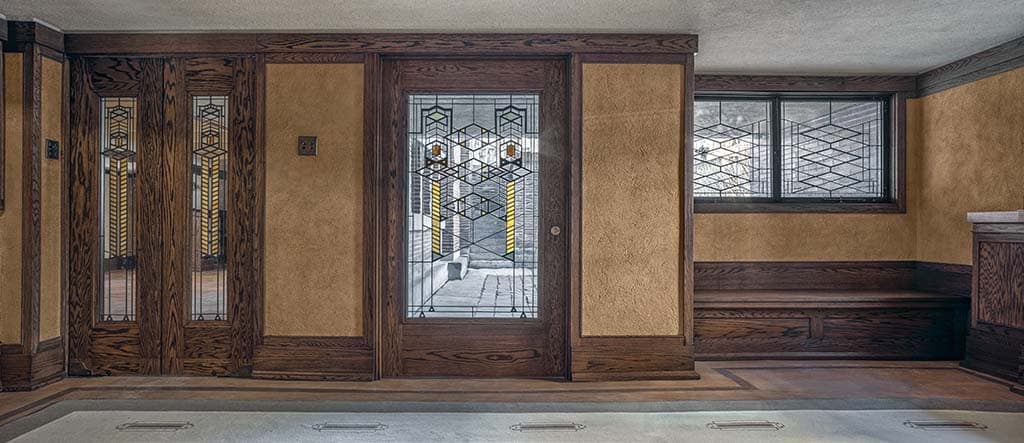
Front Door, Frederick C. Robie House (Frank Lloyd Wright, 1908-10), Chicago. Courtesy of Frank Lloyd Wright Trust. Photographer: James Caulfield.
“This restoration has brought back the magic of the house,” John Rafkin, Chairman of the Robie House Restoration Committee and Vice-Chairman of the Trust Board of Directors, said. “As proud stewards of the Robie House, we welcome visitors from the neighborhood, city, region and around the world to share in a unique and profound architectural experience.”
The interior restoration aimed to reflect Wright’s original vision in coloration, wall textures, lighting, leaded-glass windows and doors, millwork, and cabinetry. While retaining the original plaster as much as possible, a textured lime-putty plaster technique was applied to the walls, replicating the original process. The salmon, pale yellow, and ochre palette of coloration has been applied in several layers of semi- transparent paint recreating Wright’s unique autumnal palette. A magnesite floor throughout the ground level reproduces the original material, and a recreated leaded-glass front entry door to the house has been installed.

Description: Entrance Hall, Frederick C. Robie House (Frank Lloyd Wright, 1908-10), Chicago. Credit: Courtesy of Frank Lloyd Wright Trust. Photographer: James Caulfield

Entrance Hall, Frederick C. Robie House (Frank Lloyd Wright, 1908-10), Chicago. Courtesy of Frank Lloyd Wright Trust. Photographer: James Caulfield
The original inglenook surrounding the living room fireplace has been reconstructed as well as with cabinetry in the dining room and children’s playroom. Wall-mounted brass light scones, suspended glass globe lights, and semi-concealed lay lights in the ceiling combine original and recreated light fixtures resulting in a luminous mix of incandescent and natural light. In addition, several items of original furniture, including the dining table and chairs, have now returned to Robie House on loan from the Smart Museum of Art.
“Restoration is an ongoing process, a responsibility passed from one generation to the next, to preserve great monuments in perpetuity,” Celeste Adams, Trust President & CEO, said. “With support from the Getty Foundation through its Keeping It Modern initiative, the Trust is completing a Conservation Management Plan for the Robie House. This comprehensive document will include policies that will guide preservation work for many decades to come.”
In addition to the restoration, the Frank Lloyd Wright Trust is now offering new programming and tours at the Robie House, including the Past and Present tour, a new self-guided walking audio tour in eight languages.
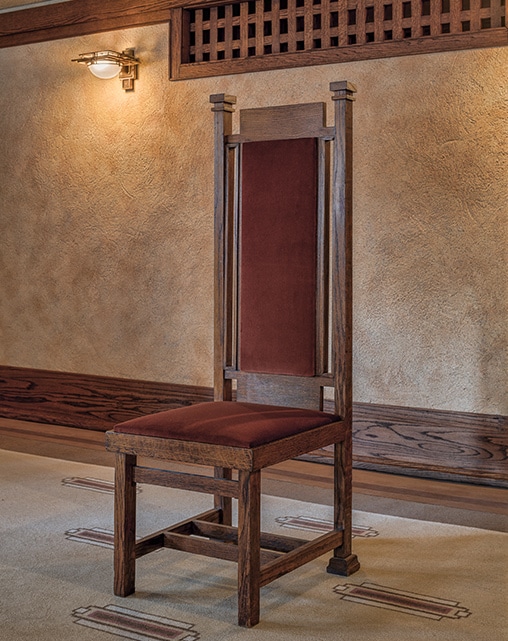
Hall Chair, Frederick C. Robie House (Frank Lloyd Wright, 1908-10), Chicago. Courtesy of Frank Lloyd Wright Trust. Photographer: James Caulfield.

